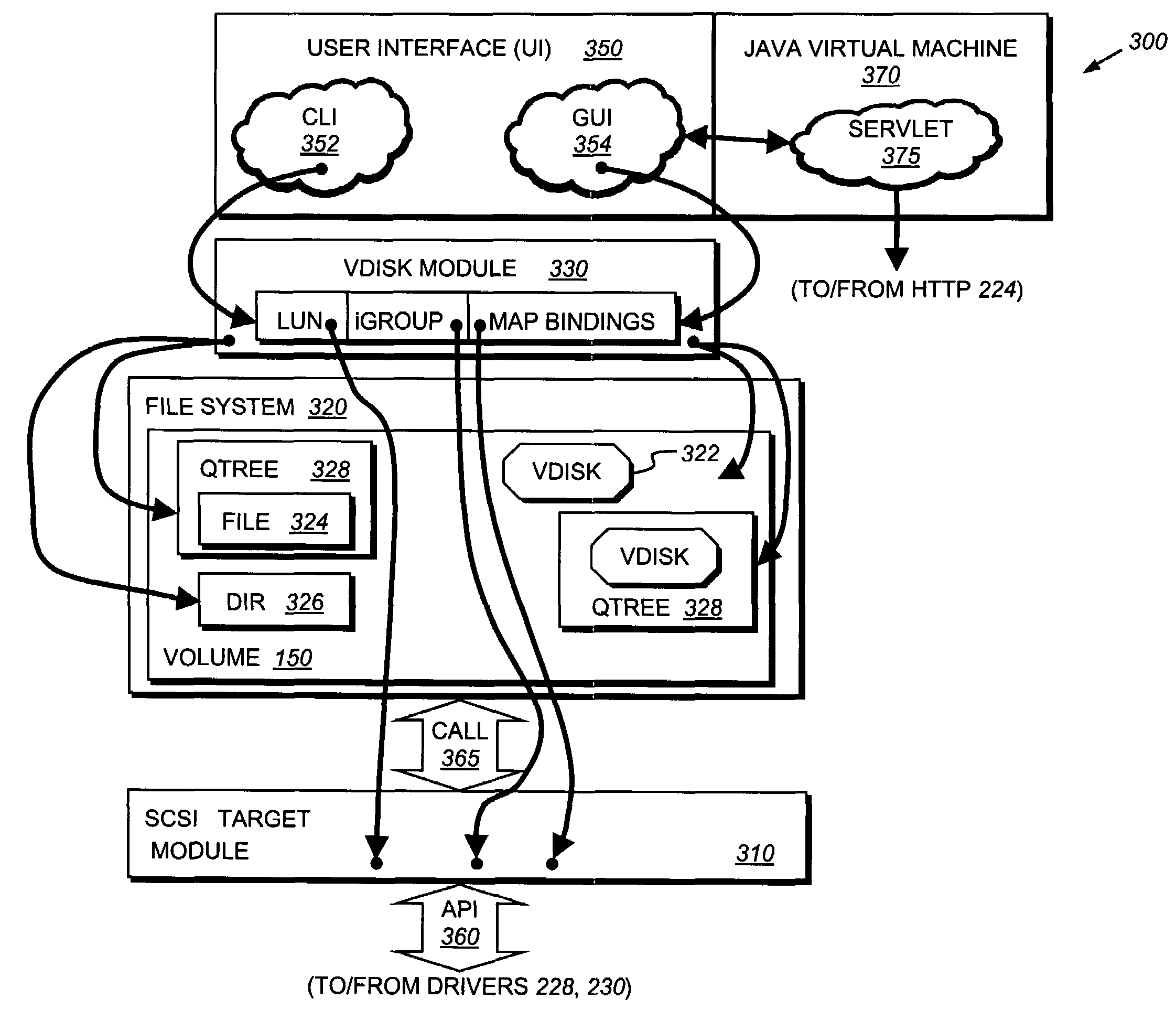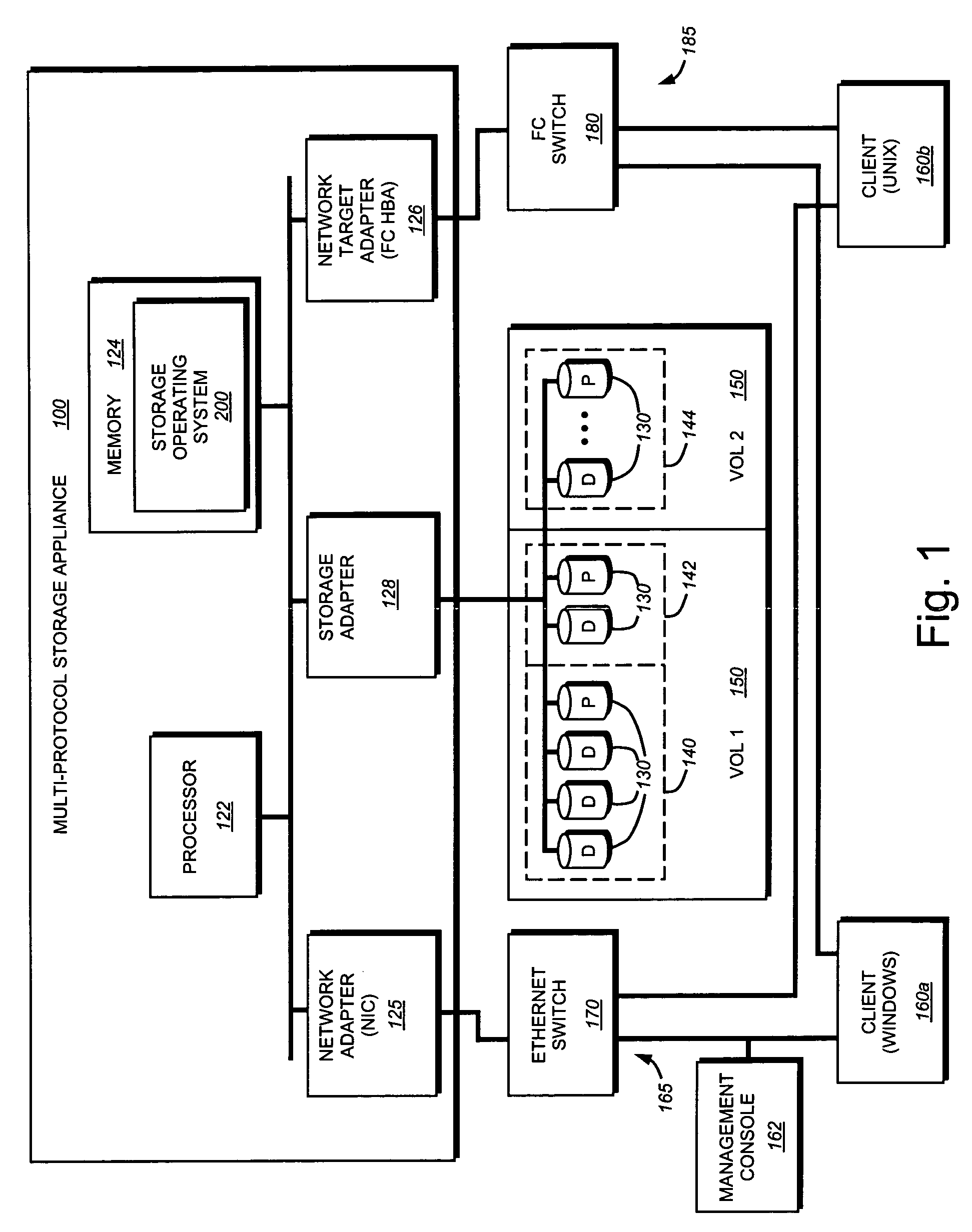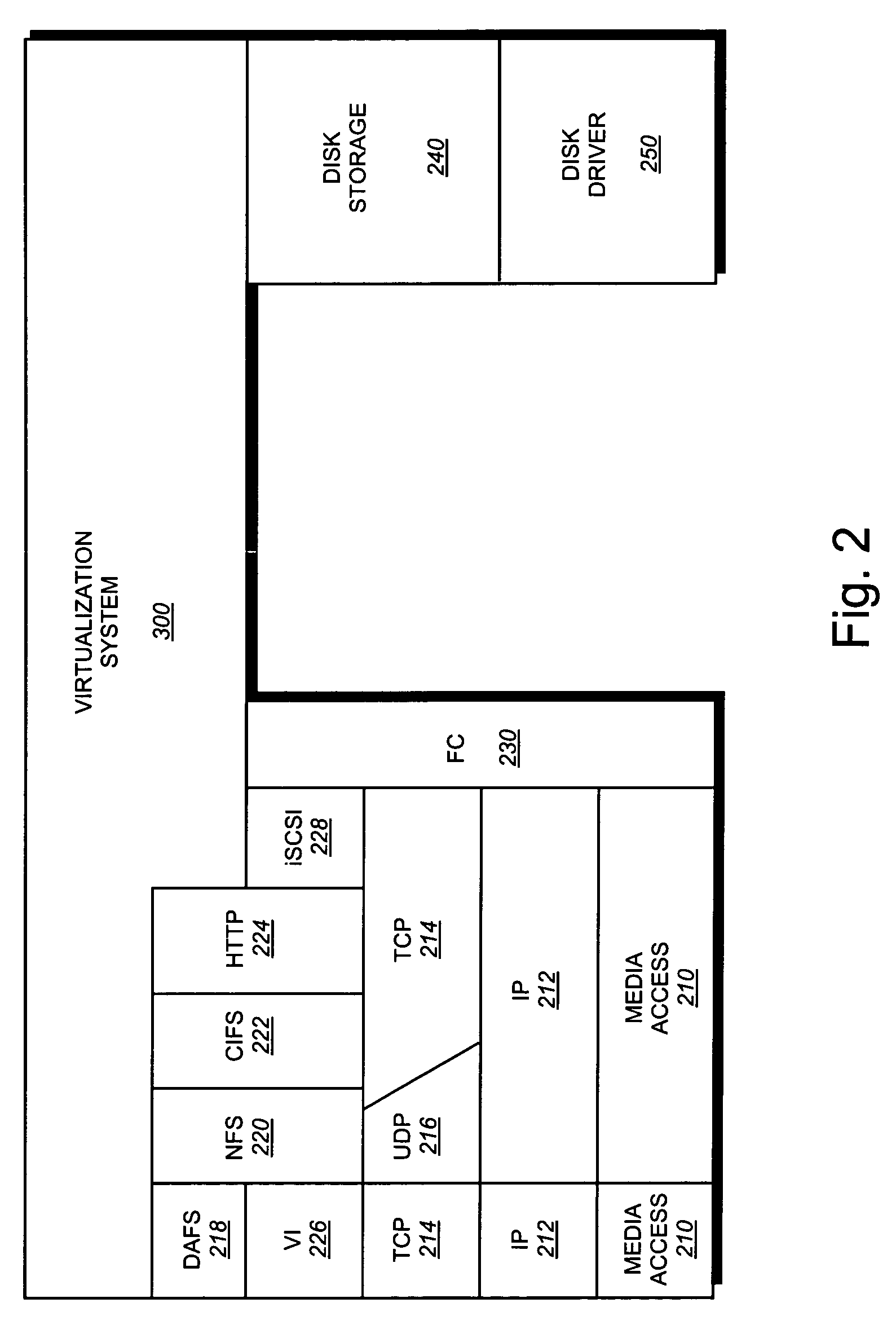User interface system for a multi-protocol storage appliance
a storage appliance and user interface technology, applied in the field of storage systems, can solve the problems of large administrator intervention, complex and costly approach of conventional user interface systems for san and nas storage environments, etc., and achieve the effects of increasing/decreasing the size of the vdisk, simplifying the management of the storage system, and simplifying the management of the storage applian
- Summary
- Abstract
- Description
- Claims
- Application Information
AI Technical Summary
Benefits of technology
Problems solved by technology
Method used
Image
Examples
Embodiment Construction
A. Storage Appliance
[0044]The present invention is directed to a user interface for a multi-protocol storage appliance that serves both file and block protocol access to information stored on storage devices in an integrated manner. In this context, the integrated multi-protocol appliance denotes a computer having features such as simplicity of storage service management and ease of storage reconfiguration, including reusable storage space, for users (system administrators) and clients of network attached storage (NAS) and storage area network (SAN) deployments. The storage appliance may provide NAS services through a file system, while the same appliance provides SAN services through SAN virtualization, including logical unit number (lun) emulation.
[0045]FIG. 1 is a schematic block diagram of an exemplary multi-protocol storage appliance 100 configured to provide storage service relating to the organization of information on storage devices, such as disks 130. The storage appliance...
PUM
 Login to View More
Login to View More Abstract
Description
Claims
Application Information
 Login to View More
Login to View More - R&D
- Intellectual Property
- Life Sciences
- Materials
- Tech Scout
- Unparalleled Data Quality
- Higher Quality Content
- 60% Fewer Hallucinations
Browse by: Latest US Patents, China's latest patents, Technical Efficacy Thesaurus, Application Domain, Technology Topic, Popular Technical Reports.
© 2025 PatSnap. All rights reserved.Legal|Privacy policy|Modern Slavery Act Transparency Statement|Sitemap|About US| Contact US: help@patsnap.com



